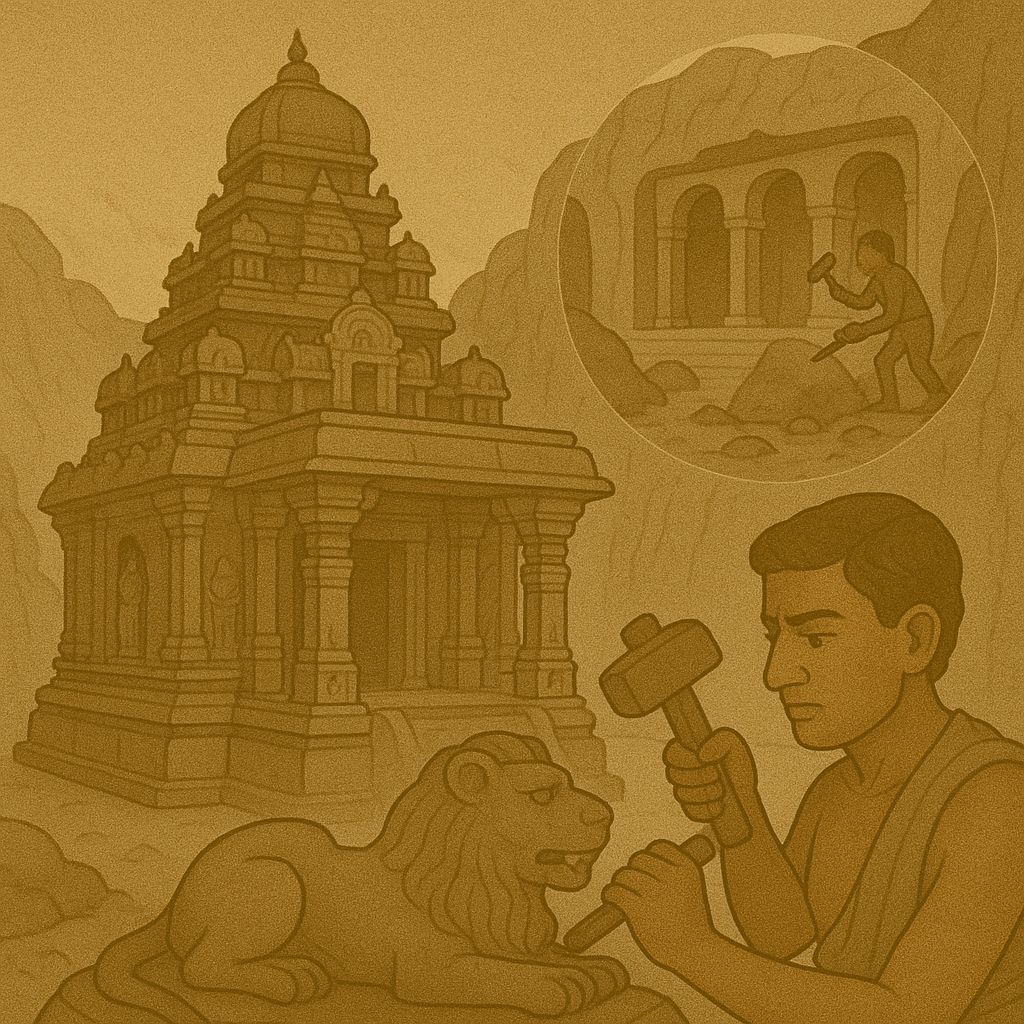Lesson 6: Indian Achievements (Ancient India)
🛕 Religious Art in Ancient India
Ancient India was full of beautiful art made to honor the gods. This art was found in temples, paintings, and sculptures. 🎨✨
🏛️ Temples
Indian temples were built with great care and detail. Early Hindu temples were small and simple. But later temples became large, with tall towers and carvings of gods and animals.
Fun Fact!
Some temples were carved out of solid rock! In Ellora, builders cut into cliffs to make rooms, halls, and shrines. They did this with no machines, only hand tools! ⛏️
🖼️ Paintings and Sculpture
Inside caves and temples, people painted colorful pictures of gods, animals, and nature. These paintings showed peace, love, and beauty.
Sculptors carved gods with many arms, each arm holding something special—like a flower, a drum, or a weapon. These symbols told stories about the gods' powers. 🪷🗡️
Story Time!
In one painting, the god Krishna is shown as a child stealing butter. People loved this story because it showed that even gods could be playful! 🧈😄
📚 Indian Literature
India has some of the oldest and richest stories in the world. These stories were told for fun, for teaching, and for religion.
📖 Religious Epics
Two of the most famous stories are the Mahabharata and the Ramayana.
The Mahabharata is the longest poem ever written! It has over 100,000 verses. It tells the story of a great war and includes the Bhagavad Gita, a sacred text that teaches about duty and doing the right thing. ⚔️🧘
The Ramayana is about Rama, a prince who saves his wife Sita from an evil king. With the help of the monkey god Hanuman, Rama shows what it means to be brave and good. 🐒💪
Fun Fact!
Even today, these stories are acted out in festivals and plays across India!
🪶 Other Works
Writers also created stories about animals, kings, and everyday life. One famous book is the Panchatantra, a collection of short stories with a lesson at the end—just like Aesop’s fables. 🐢🐇
Story Time!
One Panchatantra tale tells of a clever crow who drops stones into a pitcher so the water rises and he can drink. The lesson? “Think before you act!”
🧪 Scientific Advances
The people of ancient India were smart scientists, skilled builders, and great thinkers.
🔩 Metalworking
Indian metalworkers made tools, weapons, and statues. One amazing example is the Iron Pillar of Delhi. It is over 1,600 years old and has not rusted! Scientists still study it today. 🏗️
Fun Fact!
The Iron Pillar is so well made that no modern rust has appeared—even after all this time!
➕ Mathematics
Indian scholars invented the number zero (0) and used decimal points. They also studied algebra, geometry, and astronomy (the stars and planets). 🌌
Story Time!
A mathematician named Aryabhata said the Earth spins like a top—1,000 years before Europeans believed it! 🌍🌀
🔬 Other Sciences
Doctors in India used herbs to treat sickness and even performed surgeries. They cleaned wounds and understood how the body worked.
They also made star maps, studied the planets, and even said the moon got its light from the sun! 🌙☀️
🌟 Summary
Ancient India gave the world beautiful art, epic stories, and amazing science. People told stories of gods and heroes, carved temples from stone, and created smart ideas in math and medicine. These great achievements still inspire people around the world today!
